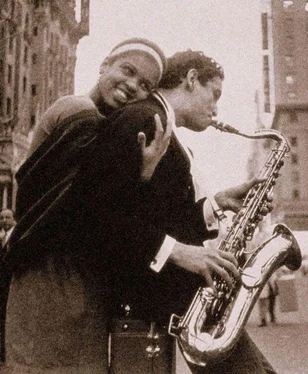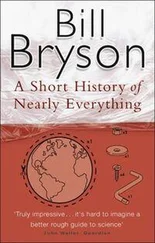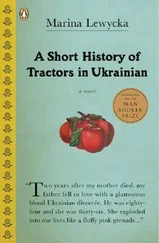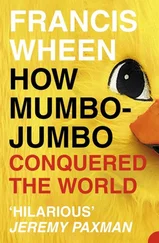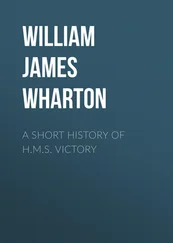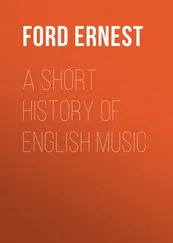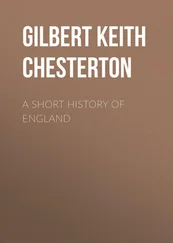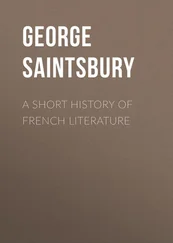Michael Morangelli - Jazz - A Short History
Здесь есть возможность читать онлайн «Michael Morangelli - Jazz - A Short History» весь текст электронной книги совершенно бесплатно (целиком полную версию без сокращений). В некоторых случаях можно слушать аудио, скачать через торрент в формате fb2 и присутствует краткое содержание. Жанр: Классическая проза, на английском языке. Описание произведения, (предисловие) а так же отзывы посетителей доступны на портале библиотеки ЛибКат.
- Название:Jazz: A Short History
- Автор:
- Жанр:
- Год:неизвестен
- ISBN:нет данных
- Рейтинг книги:3 / 5. Голосов: 1
-
Избранное:Добавить в избранное
- Отзывы:
-
Ваша оценка:
- 60
- 1
- 2
- 3
- 4
- 5
Jazz: A Short History: краткое содержание, описание и аннотация
Предлагаем к чтению аннотацию, описание, краткое содержание или предисловие (зависит от того, что написал сам автор книги «Jazz: A Short History»). Если вы не нашли необходимую информацию о книге — напишите в комментариях, мы постараемся отыскать её.
Jazz: A Short History — читать онлайн бесплатно полную книгу (весь текст) целиком
Ниже представлен текст книги, разбитый по страницам. Система сохранения места последней прочитанной страницы, позволяет с удобством читать онлайн бесплатно книгу «Jazz: A Short History», без необходимости каждый раз заново искать на чём Вы остановились. Поставьте закладку, и сможете в любой момент перейти на страницу, на которой закончили чтение.
Интервал:
Закладка:
Whiteman and later imitators provided much needed income for the Jazz instrumentalist. Beiderbecke, Venuti, Lang, the Dorsey Brothers, and Trumbauer among others found employment with him. This period between the Aeolian Concert and the Depression of 1929 are confusing years in the Jazz Scene. The ascendancy of the large dance band overshadowed the small Dixieland group, but one of the conventions of the dance bands was to employ a smaller unit generated from the larger group to provide interludes of ‘Hot Jazz’. Dance bands also hired a few accomplished soloists to provide jazz improvisations during the large group performance - Biederbecke with Paul Whiteman. This ability to play sweet - the swing bands doubling as a smooth dance band and the small Jazz group within the larger Swing Band can be traced to this.
Because the large venues made more money for the bands than the smaller rooms, the trend was to increase the size of the musical unit. The increase in size was necessary because amplification was in its infancy and the only way to meet the volume requirements of the larger rooms was to increase the number of musicians. It was this trend to larger venues and larger groups which paved the way for the Paul Whiteman Whiteman Orchestra Swing Bands of the following era. But first, some problems needed to be solved - the larger the group, the more written arrangements were necessary. But, the arranger had to find a way of preserving the jazz feel in larger groups and at what point did the band become too top heavy (too many musicians playing over the rhythm section) and rhythmic momentum stop.
Fletcher Henderson (with his arranger Don Redman) is credited with the pattern for Swing arrangements. Originally a pianist, Henderson talent was with arranging and solving the problem with his own expanding group. He first tried an enlarged Dixieland group but with the addition of Redman (studied at the Boston and Detroit Music Conservatories) tighter harmonic control became a major interest. What he finally established as a standard was the independent use of a trumpet, trombone, sax, and rhythm sections with the incorporation of soloists within the arrangement - this was an evolution from the standard ‘20’s dance band of 2 Tpts, 2 Saxs, 1 Tbne, and 4 Rhythm (banjo, piano, drums, tuba) Henderson was well aware of Whiteman (Whiteman purchased 20 of Redman’s charts) and tried to imitate the plush arrangements - but when Louis Armstrong joined his band in 1924, the band would never be classified as ‘sweet’. Armstrong’s playing was too strong and ‘hot’ - Redman stated “I changed my style of arranging after I heard Armstrong”…Redman worked out the swing formula after Armstrong had left the band.
At the same time Chicago Dixieland was peaking in popularity New York and Kansas City were also becoming important geographic areas for the developments that were leading to Swing. In New York’s Harlem the emerging bands of Fletcher Henderson (at the Roseland Ballroom), King Oliver (at the Savoy Ballroom), Sam Wooding, Cecil Scott, Chick Webb, Don Redman, Charlie Johnson, William McKinney were appearing regularly. The clubs proliferated such as The Band Box, the Lenox Club, and the Cotton Club (Duke Ellington opened there in 1927). But unlike Kansas City, there was no real New York School - a characteristic of heavily structured arrangements was the only real identifying trait.
Kansas City on the other hand was a well defined sound shaped by a large Black population and supported by several large ballrooms. It was a blues based riff structure - smoother and sweeter than the ‘20’s Dixieland sound but with the drive demanded by the southwest audience still intact. Bennie Moten is a good example of the transition from the Dixieland of the early ‘20’s to the changes started in the late ‘20’s. He started with the traditional sound of the Dixieland groups but expanded the group starting in the middle of the decade - to create more sonority he added reeds to his sax section and had expanded to 3 trumpets and 2 trombones as early as 1931.
This is the band that Count Basie ‘inherited’. Basie was stranded in Kansas City and joined the Moten Band. He left to form his own group and took many of Moten’s players with him. Moten died just as this was happening and Basie in effect took over the rest of Moten’s organization. But, Moten and Basie were not the only K.C. based bands - Andy Kirk (with Mary Lou Williams) and Walter Page among others were based here.
The years 1924 - 1929 was to my mind a true transition period. The new Fletcher Henderson Band Count Basie Bennie Moten technologies of the phonograph, radio (by 1925, 563 Radio stations had been licensed), microphone, talking pictures, and the jukebox had great effect on the spread and popularity of Jazz. The big dance bands were influenced by the new music, provided employment for jazz players, brought jazz ‘flavors’ to the general public, and were a start for the evolution to Swing. The centers of Jazz activity moved to New York and Kansas City - and as Jazz dried out in the mid-west attracted the major talent. Then in 1929 the Depression hit. The struggle for economic survival saw some of that talent leave for Europe (Ellington and Armstrong), radio staff jobs (Goodman), and some surviving in ‘sweet’ hotel bands (Lombardo)…but the music business hurt just like the rest of the country. Jazz would not be heard of again till 1935.
8 Ritz Crackers
The Swing Era lasted 10 years from 1935-1945.The term Swing Music was used originally by the British Broadcasting Company which felt that the term ‘hot jazz’ represented something immoral. The original term was but that was 50 years prior. The name stuck and labels this era and style of Jazz. In a way it mirrors the difficulties the music surmounted in gaining acceptance - as anything labeled ‘new’ must. Rhythmically, it differed greatly from the preceding dance music - often called ‘two beat’ - while at the same time growing out of that older style.It was the popular music of its time and the musical influences still touch us today - 60 years later. The music came of age at a time when the technologies of radio and movies and recording had matured beyond the term ‘new’ and had secured a niche in the life of this country. It was marketed with all the tactics of modern publicity - and made money for those who played it and those who sold it. But not right away.
The Depression had greatly affected the entire country and the Music Business had been no exception.
But now the economic environment was recovering. The effects were fading, especially for the better off segment of the middle class, and the music rapidly gained an audience among the college students. Keep in mind this was the early ‘30’s and this audience was smaller and above average in income by today’s standards. Coupled with the repeal of Prohibition in 1933 - which brought the music out of the Speakeasy and into larger venues - it provided a base of popular demand for the Big Bands. The audiences that embraced this new music were young and they danced. The Swing Bands and Swing Music were functional.
The Musical formula which enabled a large group of musicians to still play jazz had been worked out by the Harlem Bands of the preceding decade:
1. It stabilized at 13 musicians organized into sections (5 Brass [3Tpt, 2Tbne]; 4 Reeds; and 4 Rhythm).
2. The ‘hot’ solo line was harmonized and notated for the whole section and this harmonized line had to be written in the same style that a soloist would use if improvising.
3. The use of ‘Riffs’ - the adoption of the West African Call amp; Response pattern - kept the Brass and Reed Sections answering each other in endless variations.
The soloists were supported with background riffs.
Читать дальшеИнтервал:
Закладка:
Похожие книги на «Jazz: A Short History»
Представляем Вашему вниманию похожие книги на «Jazz: A Short History» списком для выбора. Мы отобрали схожую по названию и смыслу литературу в надежде предоставить читателям больше вариантов отыскать новые, интересные, ещё непрочитанные произведения.
Обсуждение, отзывы о книге «Jazz: A Short History» и просто собственные мнения читателей. Оставьте ваши комментарии, напишите, что Вы думаете о произведении, его смысле или главных героях. Укажите что конкретно понравилось, а что нет, и почему Вы так считаете.
